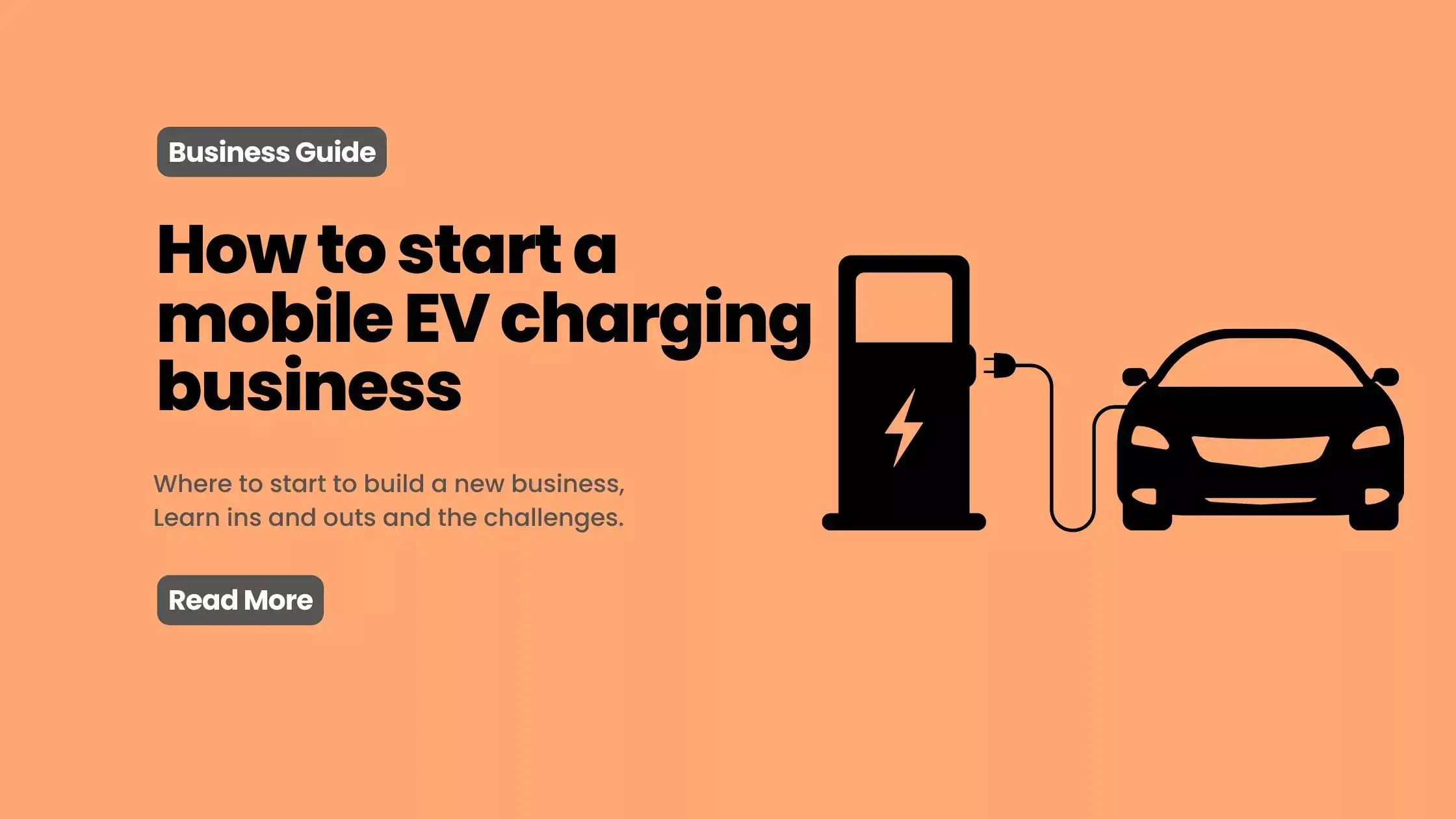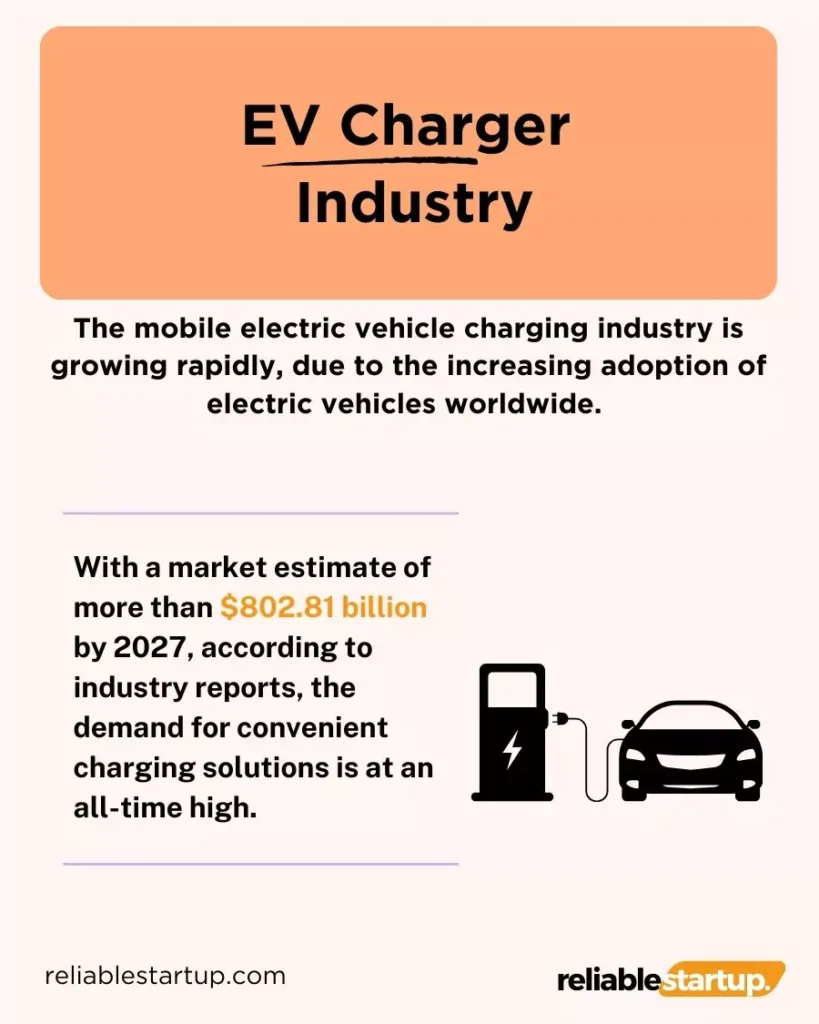How To Start A Mobile EV Charging Business?

Welcome to the electric world of mobile electric vehicle charging business!
In a rapidly evolving landscape where sustainability meets convenience, the demand for electric vehicles (EVs) continues to grow.
As more drivers adopt green alternatives, the need for affordable and efficient charging solutions becomes paramount.
In this dynamic guide, we will explore the necessary steps and strategies to start your journey into the profitable realm of mobile electric vehicle charging services.
What is mobile EV charging?
Mobile EV charging refers to innovative solutions for providing EV charging on the go, allowing drivers to easily start their EVs wherever they are.
This portable charging service eliminates the limitations of traditional fixed charging stations, allowing electric vehicle owners to recharge their vehicles whenever it’s convenient, whether at home, at work, or while commuting.
With mobile electric vehicle charging, companies can offer a seamless and reliable solution to meet the growing demand for sustainable transportation options, while allowing drivers to adopt electric mobility without the hassle of the road, which can provide freedom.
EV charger industry:

The mobile electric vehicle charging industry is growing rapidly, due to the increasing adoption of electric vehicles worldwide.
With a market estimate of more than $802.81 billion by 2027, according to industry reports, the demand for convenient charging solutions is at an all-time high.
This growing sector offers immense opportunities for entrepreneurs looking to enter the market.
As more consumers adopt electric vehicles, the need for affordable and flexible charging options becomes paramount.
Taking advantage of this momentum, starting a mobile electric vehicle charging business offers a profitable venture aimed at success in the dynamic sustainable transportation landscape.
Revolution of EV charging:
In today’s evolving era of transportation, the wide adoption of electric vehicles is an invitation for visionary people to make some prominent changes. With growing numbers of people adopting electric vehicles demand for accessible charging points has emerged as the necessity of that era.
With this context, a mobile EV charging business rises as a transformative force and tends to redefine how EV owners refuel their vehicles. By providing a flexible and responsive option that is accessible without being dependent on location.
Steps to start a mobile electric vehicle charging business:
Before launching your mobile EV charging business, there are some vital steps that you need to consider. Those will help lay a strong base for your business,
- Create a financial model. It will take up to 2 to 4 weeks and around $500 to $1500.
- Secure funding. It will take almost 4 to 12 weeks and it’s cost varies.
- Conduct market research. It will take almost 2 to 4 weeks and costs around $500 to $1000
- Develop a business plan. It will take almost 4 to 6 weeks and costs about $100 to $3000
- Get necessary permits and licenses. It will take almost 4 to 6 weeks and costs about $1000 to $5000
- Lease or purchase a specialized vehicle. It will take 4 to 6 weeks and it will cost the bigger chunk, $20,000 to $50,000.
- Install a charging station on the vehicle. It will take about 2 to 4 weeks and costs about $5000 to $10,000
- Hire and train staff. It will take 4 to 6 weeks and will cost about $10,000 to $20,000
- Launch marketing and promotional campaigns. It takes 6 to 8 weeks and costs about $5000 to $10,000
In total, it will take almost 30 to 60 weeks and will cost about $43,000 to $100,000+
Business model and pricing structure:
When stepping into the EV charging industry, choosing a suitable business model and pricing structure is very important for long-term success
Subscription model:
In the subscription model, customers pay a fixed amount monthly or annually for unlimited recharge or a fixed amount of recharging sessions. This gives a predictable revenue and potential for customer loyalty.
But there is a risk of underutilization, if customers underuse it, or overutilization, if the customer uses it too frequently.
Pay-per-use model:
The pay-per-use model works on a model that charges customers based on energy consumption or the duration of charging sessions. This model is directly connected to the usage and revenue can be higher during peak seasons.
But revenue is unpredictable.
Tiered pricing model:
Tiered pricing models give different prices based on the time of the day, type of charger, and type of customer ( members or nonmembers). This model maximizes revenue during the peak time and gives discounts during the off period to attract customers and encourage membership or loyalty programs.






